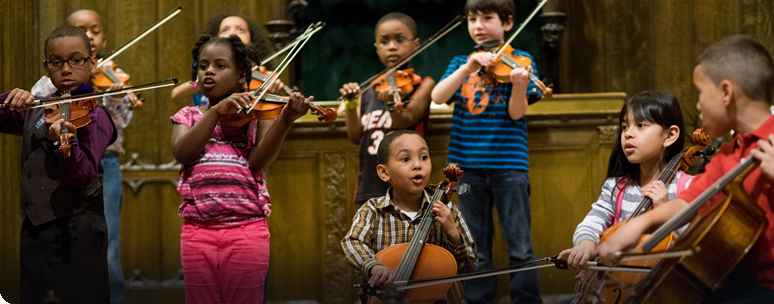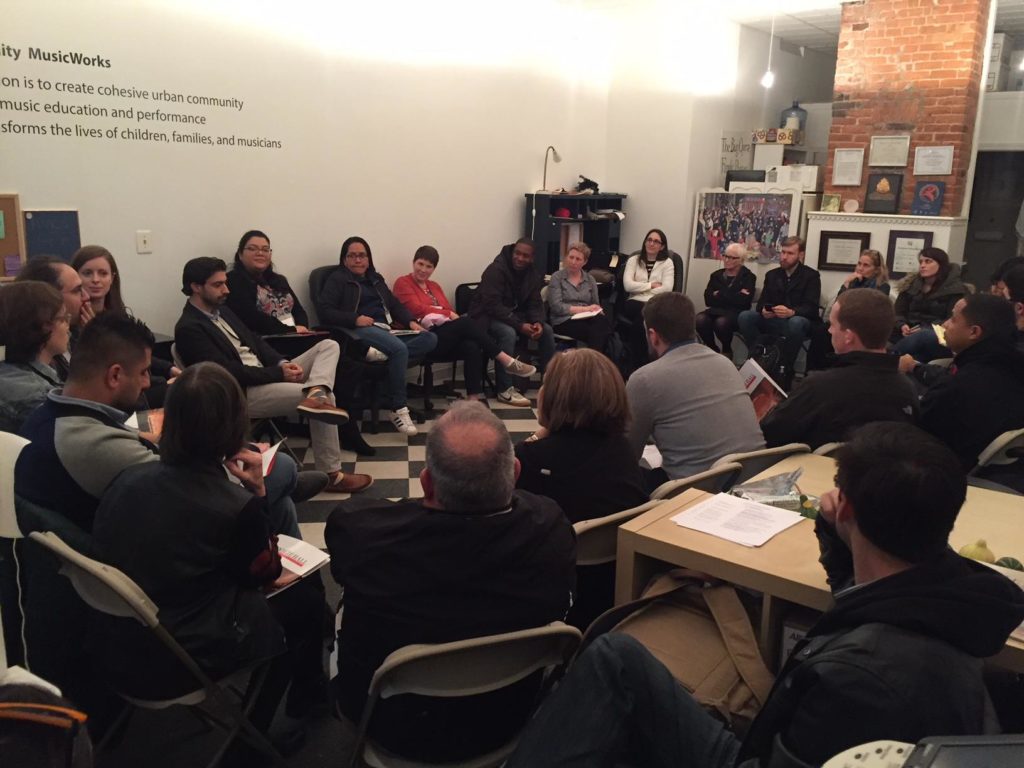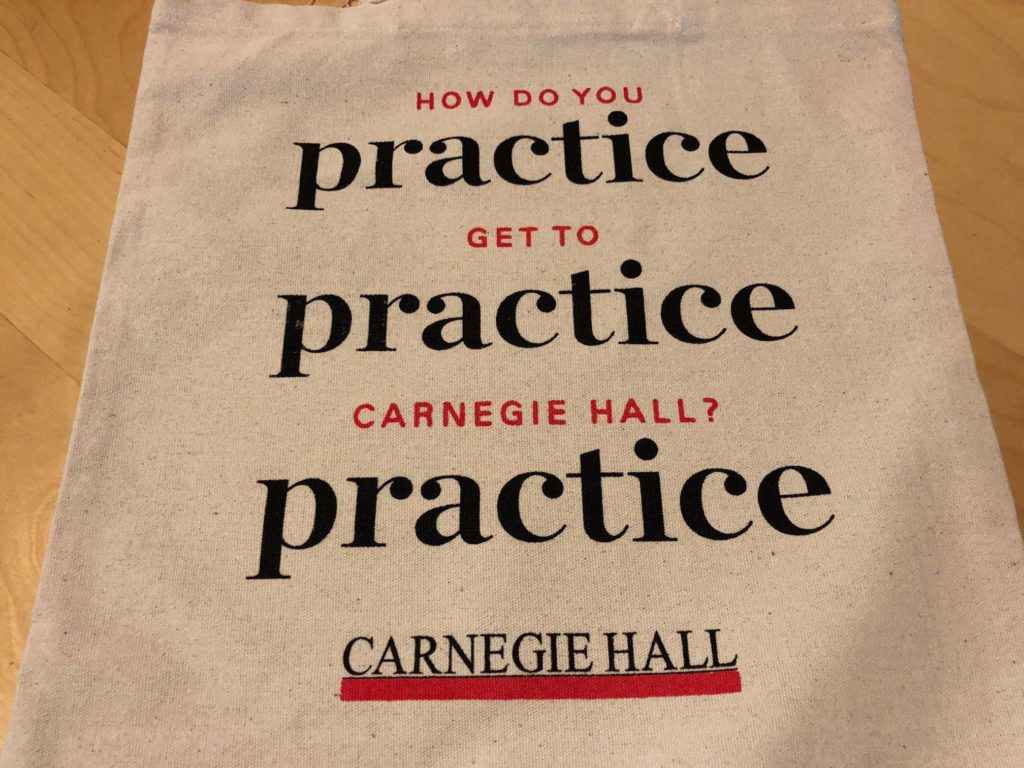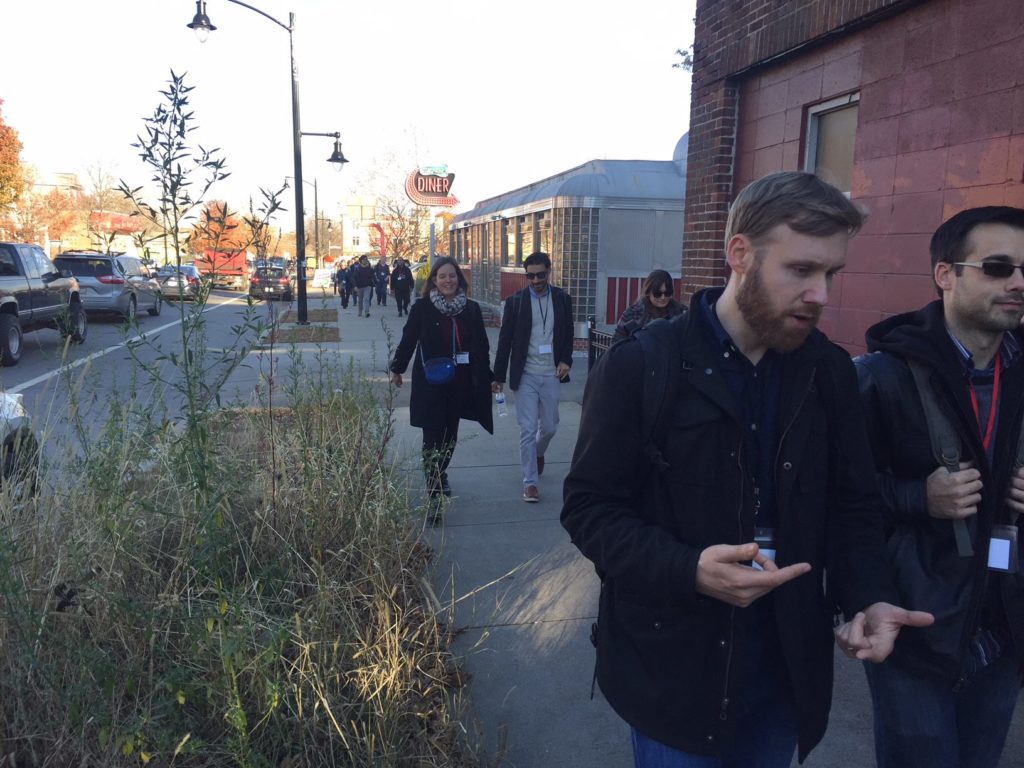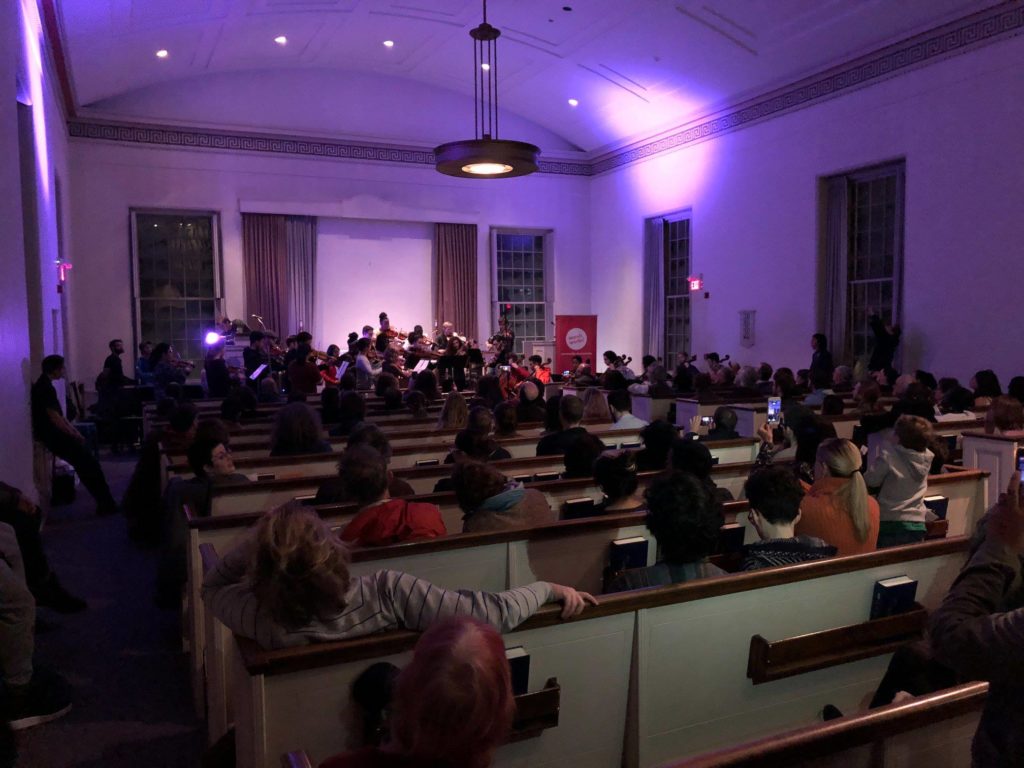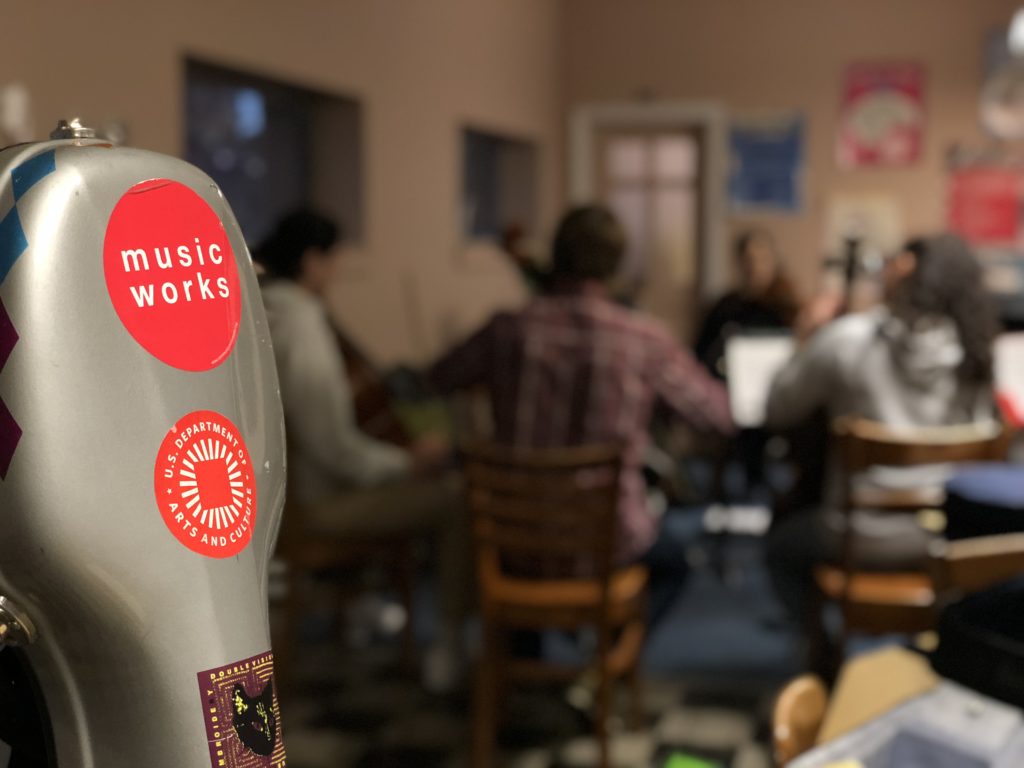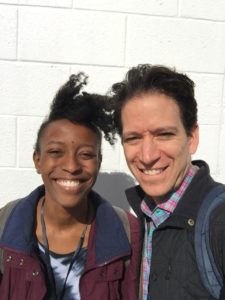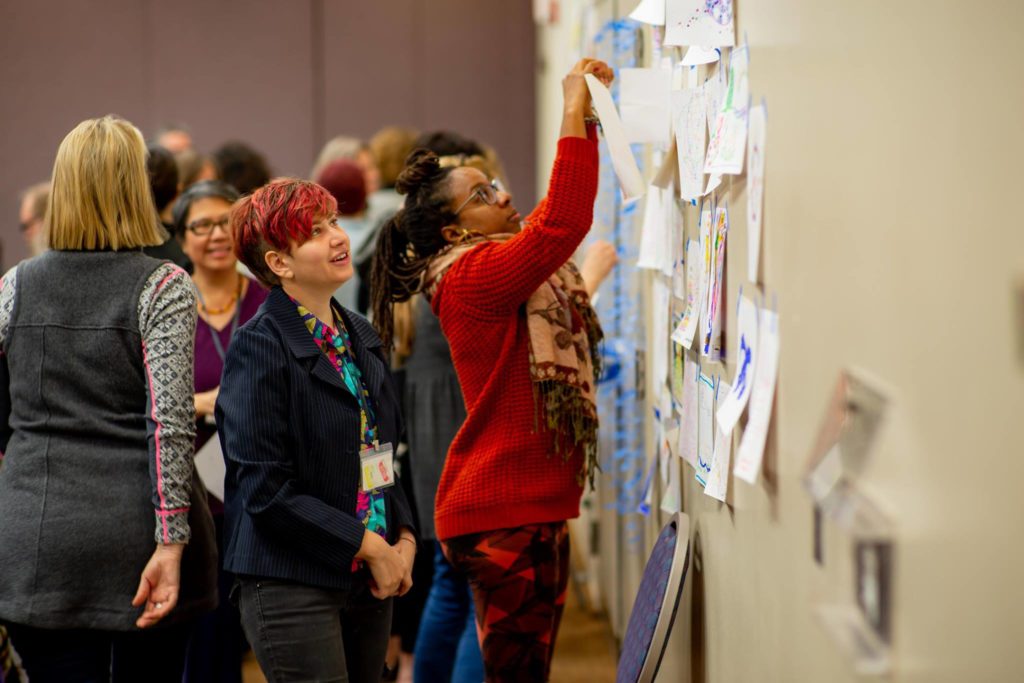Where did the idea for Saturday’s Fellows Quartet concert come from? Practically speaking, it grew from a decision made earlier this year: my colleague Luke & I decided to organize two “fellows” programs this season, with CMW’s blessing. I’d design a small, intimate show in the winter, and he’d plan a quartet recital for the spring, in a larger, more traditional concert space. That’s how we ended up with a December 1st date in Jori Ketten’s beautiful gallery space at 159 Sutton St (7pm! Don’t miss it!).
How did we arrive at this odd mix of notes? Scandinavian folk tunes. Sacred music by a 12th-century mystic. A short, secular tune by a Medieval songster. An aphorism by a severe Hungarian modernist (“by” is a stretch – stay tuned). Four minutes of Mozart. Two minutes of Bach. What a mess! Why a mess?
I can’t say for sure, but my working hypothesis is that this mess came from two unrelated ideas. Two ideas that Ms. Young – my high school history teacher – would have called “Visits to the Planet Non-Sequitur.”
***
First – it came from Schubert, even though there won’t be any Schubert on our program (the atmosphere’s nice on Non-Sequitur, eh?). There’s a moment toward the end of Schubert’s Der Lindenbaum** that I can’t get out of my head. It’s not particularly unusual or profound, really. Just a little expansion of an E Major arpeggio, slipped in between the singer’s final statements (“du fändest Ruhe dort / you’d find peace there”). It shouldn’t be much, but it breaks my heart – a world of regret, in three notes. An arpeggio can be a throwaway gesture – one extra, sugary flower on a wedding cake. Or it can make you cry.
***
Second – it came from a winter day in 2011, when I was thinking about quitting the violin. At the moment, I was preparing a Brahms sonata for a recital – the first one, the Regenlied, it’s a good one, take a listen – and conducting weekly Vibrato Wars, in which my teacher and I would argue about how many notes one should wiggle, and whether the wiggling should continue from note to note uninterrupted, and on and on and on. Did beauty come from the wiggling? What about meaning – did that come from the wiggling, too? I was pretty burnt out from the Vibrato Wars. I didn’t know how I wanted a violin to sound, but I knew it wasn’t the way I was being asked to play. My teacher was and is a brilliant musician, and I am full of admiration for her – but I just couldn’t realize the sounds she wanted from me, because I didn’t believe in them.
And then, entirely by chance, I pressed “play” on a short little iTunes preview, a 30-second clip from a recording by German violinist Isabelle Faust & Russian pianist Alexander Melnikov, and everything changed. They played the opening notes of the Regenlied on an old-fashioned, 19th-century piano, and on simple strings made of gut. Here was a sound that had texture as well as color – it was flawed, and vulnerable, and pure. There was some vibrato – some wiggling – but not much. It was like someone telling a simple story, and telling it beautifully. The words were plain, but the delivery – the grain of the speaker’s voice… a pause here, a sigh there – couldn’t have been more subtle or powerful. That little clip gave me lots of hope, and I listened to it again and again and again, and I decided to keep playing the violin.
***
The pieces we’re going to share with you will be full of moments like that little gasp in Der Lindenbaum. They will lend themselves to that unvarnished sound – sweet and raw – that I first heard seven years ago.
You’ll hear most of Wood Works, a collection of traditional Scandinavian folk tunes, beautifully arranged by the Danish String Quartet. These are storied pieces that sound simultaneously plain and complex, ancient and contemporary, in the way that folk music often does. My favorite is the unassuming, slow Waltz after Lasse in Lyby – you can hear a clip of that on CMW’s Instagram, if you want a taste…
Throughout the night, we’ll drift in and out of the world of Wood Works, visiting disparate yet related voices from a millennia of musical history. You’ll hear a gorgeous transcription of O virtus Sapiente (“O power of Wisdom”), by the 12th-century visionary, Hildegard von Bingen. You’ll hear a lovely, lilting tune – Rose, Liz, Printemps, Verdure – by everyone’s favorite 14th-century celebrity, Guillaume de Machaut. And you’ll hear three of my favorite things…
One, an achingly sweet little melody from Bach’s keyboard Capriccio, BWV 992. If you’ve seen Luca Guadagnino’s Call Me By Your Name, you’ll recognize this – it’s Elio’s serenade to Oliver on a lazy, summer day.
Two, a magical Andante from one of Mozart’s Divertimenti for string instruments. This is the perfect example of Mozart’s magic, in my eyes. We start with a graceful, predictable dance, and it seems you know how it’ll play out. All it takes is a single chromatic inflection, though, to send us to the world of opera in miniature – as beautiful an arioso as you’ll ever hear… but don’t blink, or you’ll miss it.
Third, the conclusion of György Kurtág’s Officium breve in memoriam Andreœ Szervánsky. I worship Kurtág’s music – check out his orchestral masterpiece Stele/ΣΤΉΛΗ, if you’re new to his art – but the irony here is that the Officium breve’s concluding page isn’t even by Kurtág. Rather, it’s a quotation from a string orchestra piece by Szervánsky, the Hungarian composer memorialized herein. The Kurtág/Szervánsky wasn’t included on the Voyager Golden Record (it hadn’t been written yet…), but I like to imagine that it was. I picture that tiny minute of music hurtling through space, a kind of “Interstellar Call.” It has all of the magic of Beethoven’s Cavatina, in twelve measures.
So, join us on Saturday night for a visit to the Planet Non-Sequitur. There’ll be some good tunes waiting to greet you.
–David Rubin, violinist, Fellows Quartet
Fellows Quartet
Saturday, December 1 at 7pm
159 Sutton Street, Providence
Get directions here
** About 17:45 into a Winterreise recording by Mark Padmore & Paul Lewis, if you’re curious – https://youtu.be/soDkFNsQMFA.
